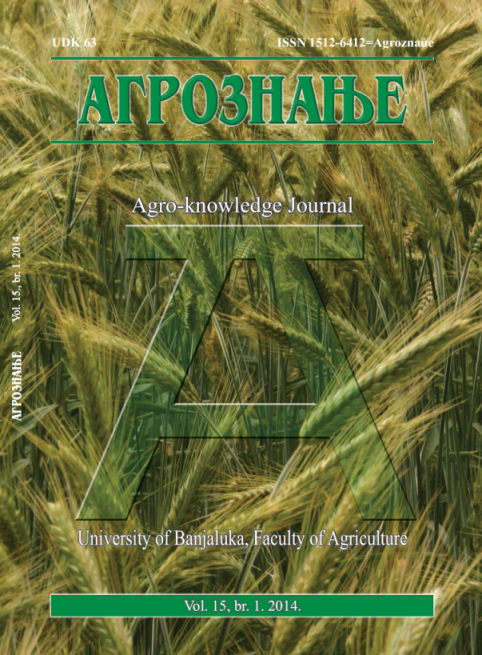Effect of Row Spacing on Seed Yield, Yield Components and Seed Quality of Alfalfa
DOI:
https://doi.org/10.7251/AGRSR1401085BAbstract
Under agro-environmental conditions of Southern Serbia, the research was conducted over a three-year period to evaluate the effect of row spacing on seed yield, yield components and seed quality of alfalfa cv. ’K-23’. The average seed yield of alfalfa was highest at a row spacing of 40 cm (271.7 kg ha-1), followed by row spacing of 20 cm (249.4 kg ha-1) and 60 cm (244.0 kg ha-1). The highest and lowest number of inflorescences per stem were obtained in rows spaced 60 cm (13.37 inflorescences/stem) and 20 cm apart (8.57 inflorescences/stem), respectively. The widest row spacing of 60 cm (7.15 pods / inflorescence) resulted in the highest number of pods per inflorescence, whereas the lowest number was produced at 20 cm spacing (5.50 pods / inflorescence). Grain number per pod ranged from 3.55 (at 20 cm row spacing) to 4.05 (at 60 cm). The highest quality of alfalfa seed during the three years of the research was obtained at the widest row spacing (60 cm). Thousand-seed weight was highest at 60 cm and lowest at 20 cm (1.97 g and 2.07 g, respectively). The highest average values for seed germination rate were reported for 60 cm row spacing (88.00%) and the lowest for 20 cm row spacing (85.76 %).Downloads
Published
2015-06-15
Issue
Section
Articles

